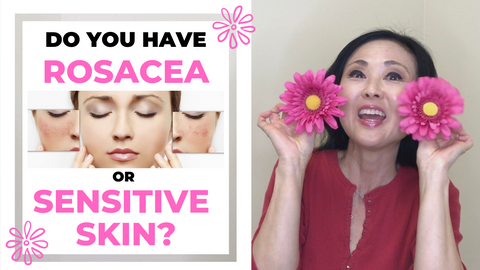Hyperpigmentation Treatments for Dark Skin: Black Skin, Asian Skin and Fitzpatrick 4-6: If you are experiencing hyperpigmentation from :
-Age Spots
-Acne Scars
-Melasma
and you fall under the Fitzpatrick Scale of 4-6 (Hyperpigmentation and your Skin Type)
OR are blood related to someone who falls under the these categories, then this post is for you.
Most skin that has some sort of ethnic background tend to have:
-thicker skin
-Oilier Skin
More Challenges in:
-Hyperpigmentation
-Hypopigmentation such as:
-Vitiligo
-Tinnea Versicolor
-Pityriasis Alba
-Acne
-Keloids
Those of you who have fair skin and have a mixed heritage may find that even though you may have fair skin, you may begin to have hyperpigmentation more than a typical Fitzpatrick 1 or 2.
Those with fair skin, especially those with red hair will have more pheomelanin (reddish yellow pigment found in red hair and concentrated in redder areas of the skin such as the lips) than Eurmelanin (which is a dark pigment that is mainly found in brown/black hair.
There are two types : brown Eumelanin and black eumelanin.
Why Tyrosinase Inhibiting Products may work better for darker skin:
This is a VERY simplified explanation of Melanogenesis to help you understand why Tyrosinase Inhibiting products may work better if you have darker skin.
Melanocyte Stimulating Hormone (MSH) is triggered and released. Inside the melanocyte (cells that create melanin), a process begins that eventually leads to the enzyme tyrosinase being released from the Rough Endoplasmic Reticulum (RER) an converts the amino acid Tyrosine to convert it to L-Dopa.
Tyrosinase binds with the copper and responds on the L-dopa, changing it to melanosomes. This is basically where pigment is produced, stored, and transported along dendrites (arms of the melanocyte) and transferred to the keratinocyte.
The keritinocytes in skin of the color have more PAR-2 receptors (Protease-Activated Receptor). These increase in numbers by UV exposure. This could explain why darker skin may be more responsive in creating more melanin.
There are a few more step but to avoid losing you all, let’s move on to what I want you to take away from this is that:
- . You understand just a bit more that melanogenesis is a complex process so that is wy the formation of hyerpigmentation is not overnight so fading it is also a slow process.
- The darker your skin is or the easier your skin is able to tan, the easier for this process to take place, resulting in the likelihood of hyperpigmentation.
This is why prevention is the best and easiest way to deal with hyperpigmentation AND less aggressive treatments (although slower) can avoid the increasing of hyperpigmentation by reducing inflammation that can be caused by more aggressive treatments and Hypopigmentation.
Best Hyperpigmentation Treatments for Dark Skin:
The best hyperpigmentation treatments for dark skin is a slower, less aggressive treatment.
Studies have shown that when using a more gentle approach by combining a skin bleaching agent such as hydroquinone with a tyrosinase inhibitor.
For example, using an OTC (over the counter) percentage of 2% combined with:
Ascorbic acid
Azelaic acid
Lactic acid
Kojic acid
These (just to name a few) tend to be less irritating than a prescribed 4% hydroquinone on darker skin types and less likely to cause post inflammatory hyperpigmentation.
Another topical treatment option is a combination of:
hydroquinone-skin bleaching agent
tretinoin-speeds up skin cell turnover rate and increases penetration of the hydroquinone in the stratum corneum
corticosteroid-reduces inflammation which can be brought on by hydroquinone and tretinoin. The corticosteroid also inhibits melanocyte activity.
Hyperpigmentation Treatments on Indian Skin:
According to one study, 25 Indian women who had melasma, saw improvements in their hyperpigmentation. When paired with a series of glycolic acid treatments, once a month for three months, 91% of the participants saw success in the lightening of their melasma.
Ingredients that lighten hyperpigmentation in darker skin types
Arbutin: Found in cranberries, blueberries, bearberry leaves
-Inhibits tyrosinase activity and melanosomes from maturing.
-Tends to be less irritating than hydroquinone because it converts to hydroquinone IN the skin so it is a more controlled release.
Kojic Acid: derived from rice, soy, mushrooms.
This prohibits melanogenesis by removing the copper that is bound to tyrosinase.
It also reduces the number of melanosomes and dendrites.
Licorice root extract: naturally derived /can be also engineered
This inhibits UVB induced hyperpigmentation/erythema.
- has anti inflammatory properties
- inhibits tyrosinase activity without causing cell damage
Tyrosinase Inhibitor Products:
Md Dermaceutical Age Reverse Serum
***PRO TIP***
When you have areas of pigmentation, the pigments are formed fro the lower levels of the skin. When you are trying to lighten these pigments, for best results, use several products to lighten the hyperpigmentation such as:
Exfoliate– to speed up skin cell turnover rate. If you can, find products such as the Ageless Resurfacing Masque that already have several lighteners and brighteners in them.
Multi Layering Method: Increase the efficacy of the products by using several products on top of each other. As each ingredient gets absorbed in the different layers of the skin, less and less ingredients get to the source of the problem.
Use an Anti Inflammation Product:
This is especially important for darker skin types as inflammations can increase melanin production. In lighter skin, their skin inflammation can show up over time as fine lines and wrinkles.
This could be a corticosteroid, or calming products such as cleansers, serums , and creams that contain ingredients such as:
Chamomile
Green Tea Extract-both brightening and calming
Beta Glucan
Calendula
Arnica Montana
If you prefer a water based gel because you want the hydration AND ant inflammatory benefits and you tend to be break out prone or have sensitive skin you may try:




